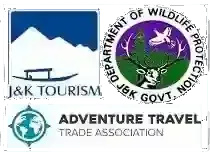Frequently Asked Questions
Who is leading your trips?
We use professional local guides and instructors according to the requirements of a specific itinerary. Our guides and instructors are licensed members of the Kashmir Tourism Department. Not only is this a legal requirement in Kashmir, but it’s also your guarantee of a safe, knowledgeable, and experienced leader on your trip.
Our leaders are hand-picked and have extensive experience in the areas they visit and operate in. Most of our leaders are our long-time friends and climbing, trekking, or skiing partners who, in addition to being incredibly skillful, are great companions in the mountains. All our leaders are English speakers.
What is Accommodation like?
The accommodation is an important part of your trip. We always look for an accommodation which is in a great location, whilst offering a friendly and welcoming service and an authentic experience. We aim to strike a balance between accommodation that we feel will fit most people’s taste and keep our trips affordable. The type of accommodation varies depending on whether we’re in the heart of an alpine village or high up in the mountains. On our multi-day treks, you’ll generally stay in tented camps, hotels, houseboats, and mountain huts.
In houseboats we use twin or double rooms, we offer a private room upgrade for those who prefer. There are shower and toilet facilities in all houseboats and mountain huts.
In mountain valleys and meadows we provide tented accommodation. Our tents are double fly spacious tents, we carry proper matting, sleeping bags, and blankets.
What about single travelers and single rooms?
Single travelers are very welcome on our trips. Single travelers will share rooms with other single travelers. On the rare occasion where we’re not able to find a suitable room share solution, single travelers may be required to pay a forced single room upgrade fee.
For travelers wishing to have a private, single room, it’s often possible to upgrade at an additional cost.
What will I carry in my rucksack?
Exactly, what you need to pack in your backpack depends on the type and duration of the tour, your personal preference, and whether you have opted for additional baggage transfers. Generally, the less you carry, the more you’ll enjoy your time on the trek.
Necessary items:- Passport, visas, Baselayers, mid-layers for warmth, trekking trousers, trekking shorts, wind, and waterproof jacket, Wind and waterproof trousers, Trekking socks, Trekking boots, Sun hat, Warm hat, Personal medication, Gloves, Sun protection (sunscreen incl. lip balm), Sanitary kit (tissues, wipes), Hydration system (bottles or ‘bladder’), and Sunglasses.
Optional:- Pocketknife, camera, binoculars, navigation aids, ravel towel, head torch, and money.
What about my additional baggage?
Any additional baggage that you’ve got, and that you don’t wish to carry on the mountain during your trek, can be stored at the houseboat or at our office where we meet on the first day. This means it’ll be waiting for you when you return from the trek.
Do you provide flights and transfers?
We don’t provide flights on our trips. People come from all over the world and many choose to lengthen their stay at either end of the trip to get the most of what is often the trip of a lifetime. Some prefer to have full flexibility and choice of airports and flight times, and others have access to special deals or have air miles to redeem. Airport transfers are included in our trips.
What are the Meals like?
The trip description clearly states which meals are included in the trek. There are options for dietary requirements like vegetarian and non-vegetarian meals, the later is charged an extra fee.
Check out our trek meal plan.
Should I choose a Private or Scheduled Group trip?
Our scheduled group trips are open for all to join. Joining a group trip is a great way of meeting other trekkers and is more cost-effective if you travel as an individual or small group.
A private trip offers additional flexibility. You can choose the dates of your trip to suit your schedule and you’re completely in control of who is in your group. During the trip, you’ll be going at a pace that suits you, so there’s no need to worry about keeping up or being slowed down. This makes private trips particularly popular with families and groups of friends.
What’s the weather like in the mountains and when should I go?
Summer
Summer is prime time for walking, trekking, and climbing in the mountains. Summers in the Himalaya mostly provide stable, warm weather. The main alpine summer season is from mid-June to mid-September. All the mountain treks are open during this period. In June, the weather is not too hot and there is a lot of snow left on the high trails and passes. The main Kashmir treks season has not yet begun so the mountains are still fairly quiet. July and August are by far the busiest and have the warmest and most stable weather. It’s not uncommon that temperatures exceed 30C. In September, things get quieter again and the temperatures get cooler. Of course, there’s never any guarantee when it comes to weather in the mountains and we’ve seen snowstorms in the middle of August!
Spring and Autumn
Spring and Autumn are seasons of change but are certainly not to be avoided. Spring and Autumn is a fantastic time in the Kashmir. In contrast to the busy summer season, Spring and Autumn are much quieter and both seasons offer something unique. In Spring, we enjoy watching nature come to life after the snowy winter season; the early alpine flowers and tulips are blooming. In Autumn, the colors and the light are simply breathtaking and the cool especially the chinar, crisp air completes the experience. The temperatures vary, the mornings and evenings are cool, but the days can be very pleasant with temperatures as high as 20 C. We may get some rain, and there may even be the odd dusting of snow high up. In practice, we do not run many of our trekking tours in Spring and Autumn.
Winter
Winter is a magical time in Kashmir and it’s the time for snow-trek in Naranag and skiing in Gulmarg. The winter season is generally from December to April, with some ski touring continuing into May. December and January are the coldest months and the days are shorter. Temperatures drop to as low as -10C at valley level, but dry air and frequent sunny days help a lot. The majority of the snow comes in this period and is of the lovely, light, and fluffy variety! February can still be very cold but the weather gradually gets warmer and the days longer. February still provides very good snow, including the fluffy, powdery stuff. March and April are generally the sunniest and warmest. It’s not uncommon to wear little more than a t-shirt in the warm sun. The snow-pack is at it’s deepest in the mountains and has started to compact and get firmer. the snow gets wetter during the day and starts melting at lower elevations.
Will the itinerary of my trip change?
Our trip itineraries are popular and well-proven and we aim to follow them on each trip. However, on our guided trips, we’re able to keep some flexibility in the itinerary, to match it as closely as possible to the group members’ abilities as well as uncontrollable factors such as weather and mountain conditions. Our leaders have extensive local knowledge and will always be able to find suitable alternatives on very short notice. For instance, if the normal trek on Kashmir-Great-Lakes is unsafe due to snowfall, your leader will find another, safer, route to your destination. If unforeseen circumstances necessitate a significant change in the itinerary, which requires changing accommodation and/or using unplanned transport, members may be required to contribute financially. Please keep an open mind and do not hesitate to discuss particular wishes with your leader who will try to accommodate them.
Where can I buy Kashmiri Arts and Handicrafts?
We recommend Kashmir Government Arts Emporium Srinagar situated at Emporium Building, Residency Road, Srinagar. It’s only at a ten minutes walk away from Dal Lake Srinagar. It’s a government-owned arts emporium, holds a range of reliable Kashmiri handicrafts which include carpets, shawls, wood carvings, paper mache, crewel, namda, Phool Kari, Kaliko paintings, and many more. For Kashmir Pashmina products like shawls, scarves, wraps, and mufflers, we recommend an online Kashmir based store Pashmina Crafts.


